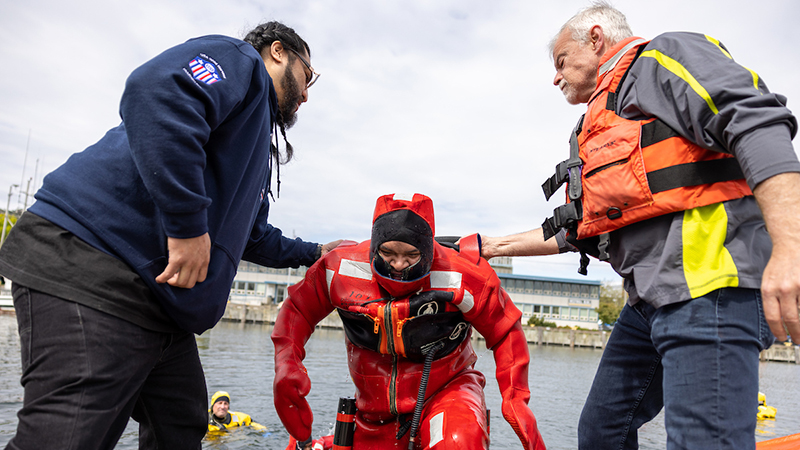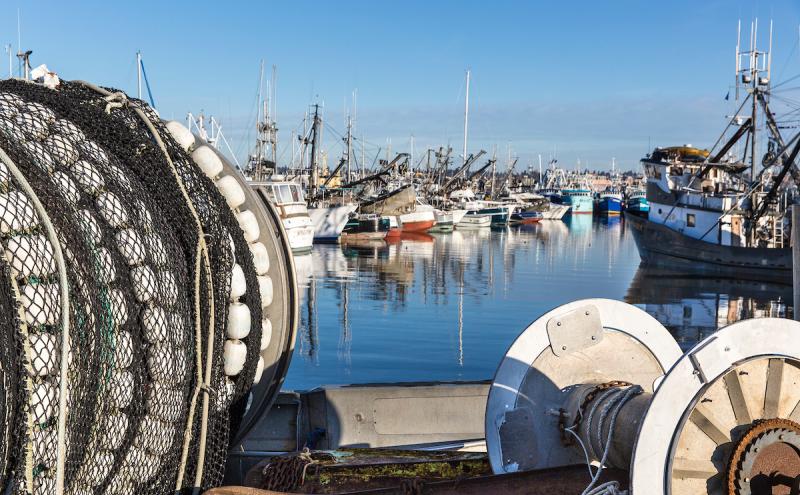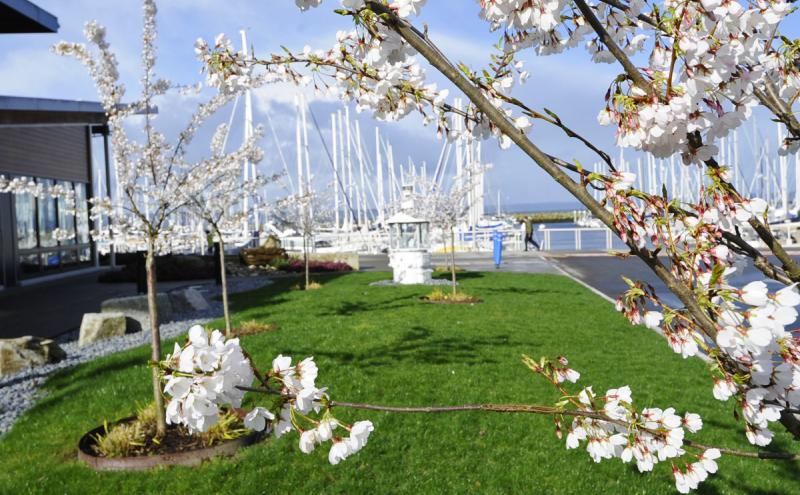The fishing season is currently underway for the North Pacific Fleet based out of Fishermen's Terminal. From mid-June to September the fleet will fish the waters off the coast of Alaska for salmon, halibut, black cod, and other species. The fishers spent most of May and early June preparing their boats, provisioning, mending nets, and brushing up on safety best practices.
Commercial fishing is one of the most dangerous occupations in the United States. Fishers often endure hazardous working conditions, strenuous labor, long and irregular work hours, and harsh weather. The National Institute for Occupational Safety and Health (NIOSH) maintains the Commercial Fishing Incident Database (CFID), and a review of data from 2000-2015* revealed 725 commercial fishermen died while on the job. The majority of fatalities occurred after a vessel disaster, and the second leading cause of death was falling overboard.
The Seattle-based Fishermen's Memorial organization aims to prevent accidental fisher deaths. Each year the organization honors local fishers who lost their lives at sea by adding their names to the Fishermen’s Memorial monument at Fishermen’s Terminal. Their ultimate goal is to stop adding names. Part of that effort includes organizing an annual Fishermen’s Memorial Safety Fair to educate new and seasoned fishers on effective methods to mitigate hazards. The event is free for fishers to attend, and programming is delivered through combined efforts from multiple industry partners, including the U.S. Coast Guard, Discovery Health MD, MITAGS, Emerald Marine, North Pacific Fishing Vessel Owners’ Association, and more. Below are some of the safety demonstrations and exercises that were available to fishers at this year’s event.
Man Overboard (MOB)
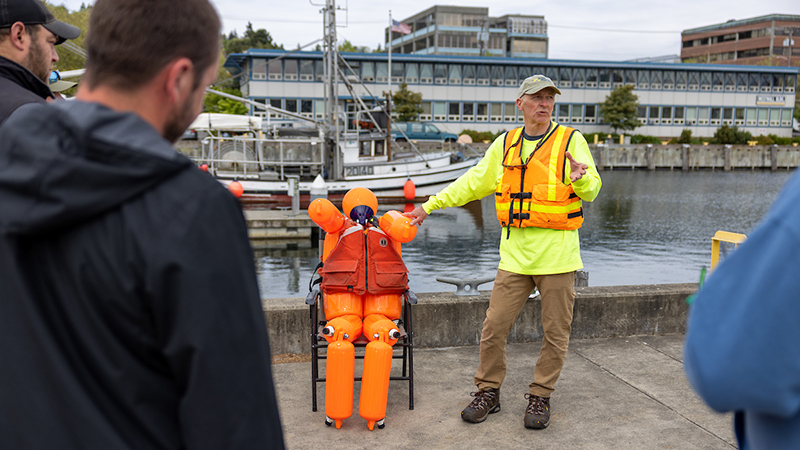
More than 200 fishers died from falling overboard between 2000-2016 in the United States. None were wearing a life jacket and 59% of the falls were unwitnessed. Meet Oscar, a bright orange dummy that simulates the average weight of a fisher who has fallen into the water — he is extremely heavy, but smartly dons a life jacket. Keep the following tips in mind to stay safe on the water:
- Always wear a life jacket on deck. Life jackets improve your chance of survival and visibility in the water.
- Try to avoid being on deck alone. MOB situations most commonly occur when a crew member is alone on deck at night or while checking equipment.
- Have a MOB rescue plan. Many crews are alarmingly unprepared to handle a MOB situation. Every crew should create and practice a plan that works with their specific setup and resources.
Proper flare use, handling, and storage
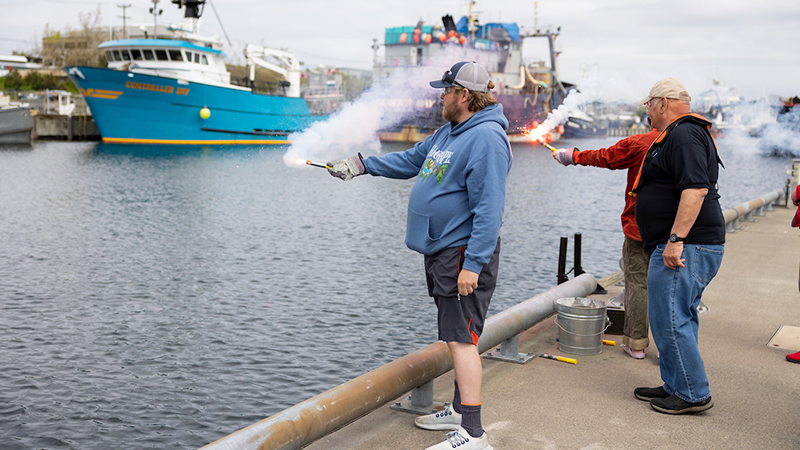
In an emergency situation, flares can save your life. But they’re of no use if they’re improperly deployed or stored. At this safety station, we learn about different types of flares, the best flares to use for specific situations, and proper flare handling and disposal. Key takeaways:
- Get the right flares for your boat
- Make sure everyone onboard knows where the flares are stored
Plugging leaks fast
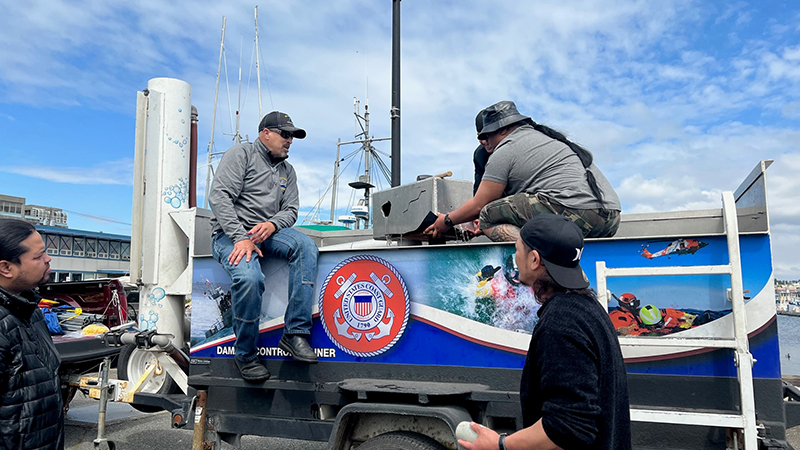
In this interactive demonstration, members of the U.S. Coast Guard demonstrated how to quickly plug vessel leaks by using a mix of recommended supplies and common items found onboard. While inside a specialized tub that simulated a leaking vessel, participants worked together to plug multiple leaks. They were able to practice speed, resourcefulness, and communication. Key lessons:
- Plan for emergency leaks by bringing extra planks, plugs, and tools
- Fix leaks fast. A minor leak or two can quickly compound into a bigger problem that may not be fixable while at sea
Fire safety
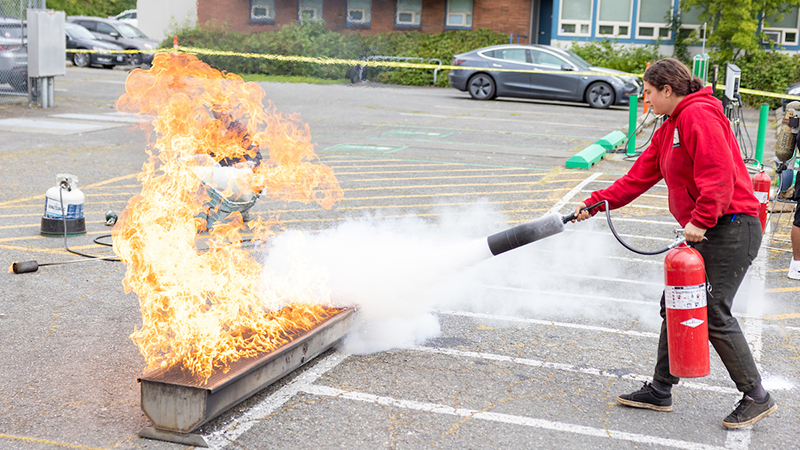
The Maritime Institute of Technology and Graduate Studies (MITAGS) training team explained common sources of onboard fires (mostly electrical issues or kitchen accidents), provided detailed information about the various classes of fire extinguishers and the appropriate use for each, and allowed fishers to practice extinguishing a gas fire. Lessons learned:
- Know and follow the legal requirements for the number and type of fire extinguishers required on board
- Make sure everyone onboard knows where fire extinguishers are located
Gumby suit training
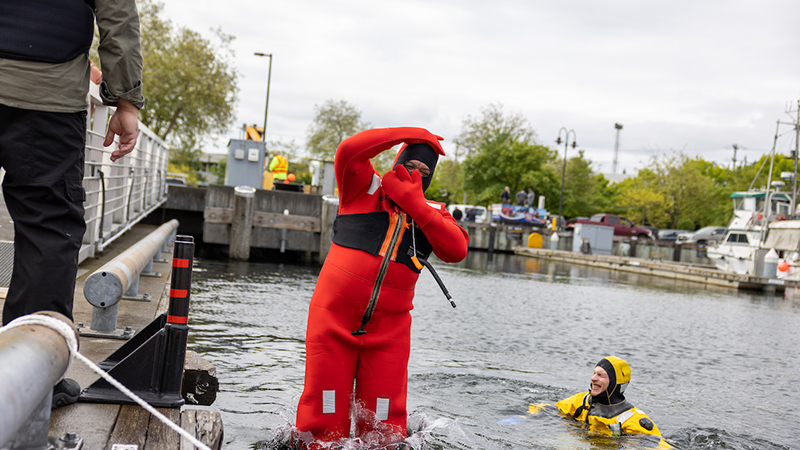
A gumby suit, aka survival or cold water immersion suit, is an essential piece of survival equipment for fleet members. The suits are made of foam rubber and designed to be watertight to stave off hypothermia and keep the wearer afloat until rescuers arrive. The North Pacific waters off the Alaskan coast are frigid year-round. In the unfortunate event where crew members must enter the water, each typically has about 90 seconds to properly put on the gumby suit. At this safety station, participants practiced donning gumby suits and in and out of the water.
*NIOSH Commercial Fishing Safety Report
